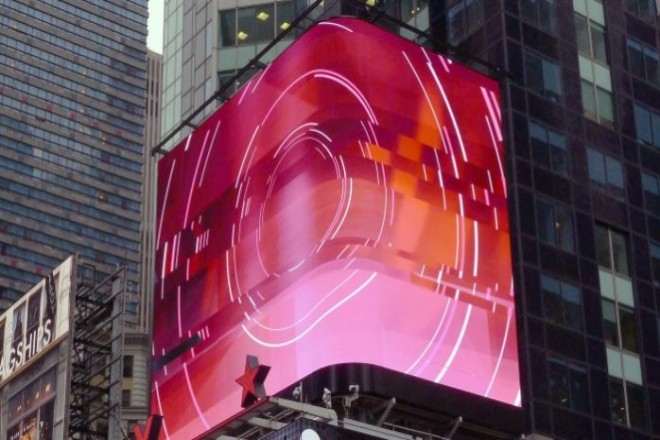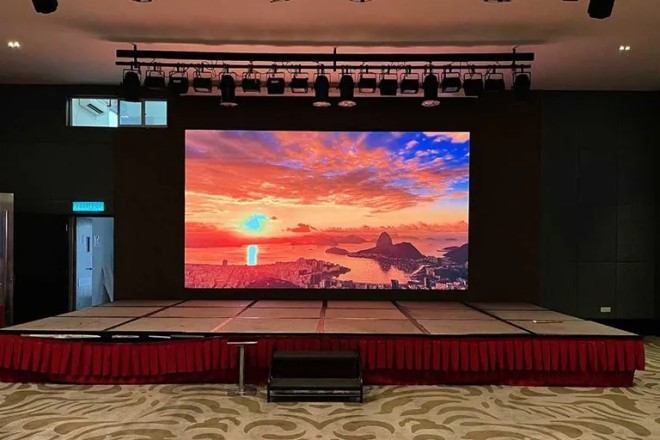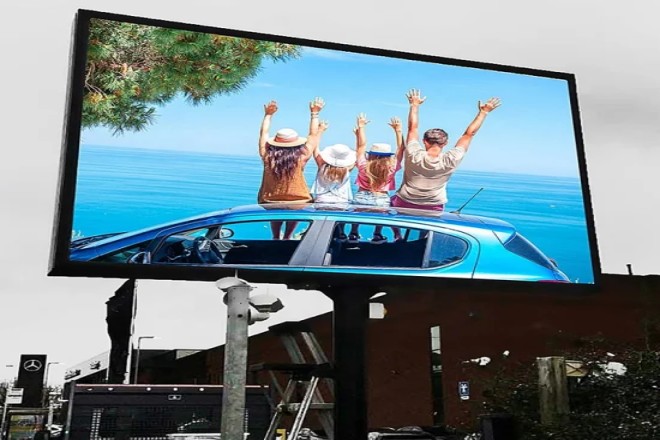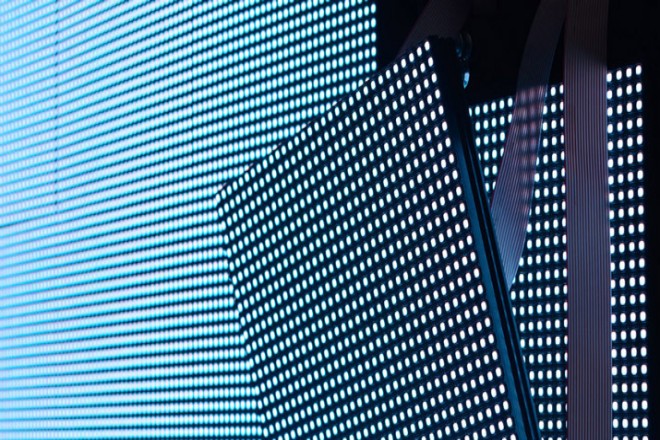Introducción

pantallas LED play an important role in information dissemination with their excellent display effects and energy-saving characteristics. Despite this, they sometimes encounter failures that affect normal use. This article will briefly explore the common causes of LED display screen damage and provide some practical maintenance tips.
Reason 1: LED display screen manufacturing and quality control issues

1). The criticality of the manufacturing link
In the manufacture of LED displays, from chip selection to circuit design to assembly, every step is crucial.
Chip quality: LED chips are like the heart of the display screen. Their brillo, color durability, etc., directly determine the overall performance of the display screen. Good chips mean better display effects and longer service life.
Diseño del circuito: The circuit board not only carries all electronic components but also ensures correct signal transmission and good heat dissipation. Ingenious design can make the display screen run more smoothly.
Assembly process: This step combines all components to form a complete display screen. Careful assembly can reduce failures and ensure the stable operation of the display screen.
Quality control plays the role of “gatekeeper” in this process. Different manufacturers attach different importance to quality control, which directly affects the final quality of the product.
2). Consequences of Lack of Quality Control
Some low-priced or inferior products often have hidden dangers due to inadequate quality control.
Lax chip screening: Using inferior chips, the display screen has uneven brightness, distorted colors, and greatly reduced service life.
Rough circuit design: Frequent problems such as poor heat dissipation and signal interference lead to unstable operation of the display screen and easy failure.
Sloppy assembly process: Weak welding and loose components are potential failure points, affecting the overall performance of the display screen.
Lack of quality inspection: Without strict quality inspection, problematic products can also flow into the market, causing inconvenience to consumers.
In short, when manufacturing LED displays, every step must be refined, and quality control cannot be relaxed. When purchasing, consumers should also choose manufacturers that focus on quality control to ensure that they buy high-quality products.
Reason 2: The influence of installation environment and use conditions
The performance and life of LED displays depend not only on their manufacturing quality and quality control but also on the installation environment and use conditions.
The following will explore in depth the potential harm of extreme environmental factors and improper operation of LED displays.
1). Challenges of extreme environmental factors
- Temperature fluctuations:
High temperature environment can cause overheating of internal components of LED display screens, accelerate the aging process, and may even cause failures.
Low temperature may make the display material brittle, affecting electrical performance and mechanical stability.
- Humidity impact:
A high humidity environment can easily cause circuit short circuits, resulting in abnormal display function.
Long-term high humidity may cause corrosion to internal components of the display screen, shortening its service life.
- Dust accumulation:
Dust not only affects the display effect, but also may block the heat dissipation channel and cause the display screen to overheat.
Chemical substances in dust may corrode the surface of the display screen, damaging its appearance and performance.
2). Overuse:
Long-term high brightness operation, especially when displaying a full white screen, will significantly increase the energy consumption and heat generation of the display screen, accelerating aging.
Overuse may also cause wear and fatigue of internal components of the display screen, shortening its service life.
- Frequent switching:
Frequent switching of the display screen in a short period of time will cause impact on the power circuit and drive circuit, increasing the risk of failure.
Frequent switching may also damage the relays and switching components inside the display screen.
3). Improper operation:
Turning off the power when the display is not completely cooled, or operating in other improper states, may damage the display.
Using inappropriate cleaning tools or methods to clean the display may scratch its surface or damage its coating.
In order to extend the service life of the LED display and ensure its stable operation, the following measures are recommended:
Choose a suitable installation environment to avoid extreme temperature and humidity conditions.
Clean the display regularly and use appropriate cleaning tools and methods.
Follow correct operating specifications to avoid overuse and frequent switching.
Inspect and maintain the display regularly to detect and deal with potential problems in a timely manner.
Reason 3: Power supply and circuit protection design issues of LED display

The stable operation and efficient life of LED displays are deeply affected by the stability of their power supply and circuit protection design. The following will explore in depth how these two core elements shape the performance and reliability of the display.
1). Stability of power supply
The stable power supply is the cornerstone of the smooth operation of LED displays. An unstable power supply may cause uneven brightness, flickering, or even a completely black screen, seriously affecting the user experience. To ensure the stability of the power supply, you should:
- Select high-quality power supply:
A high-quality power supply can ensure stable output of voltage and current, effectively reducing fluctuations and interference.
Implement redundant power supply strategy: In critical applications, multiple power modules are used for parallel power supply so that the display can continue to operate even if a single power supply fails.
- Strengthen power management:
Through advanced power management system, real-time monitoring of power supply status, flexible adjustment of output voltage and current, and adaptation to load changes.
2). Circuit protection design:
High-quality circuit protection design is the key to LED display screens to resist current and voltage fluctuations and improve their stability and life. This includes:
- Overcurrent protection mechanism:
When the current exceeds the safe range, the overcurrent protection circuit quickly cuts off the power supply to protect the LED lamp beads and circuit components from damage.
- Overvoltage protection design:
The overvoltage protection circuit can respond quickly when the voltage rises abnormally to prevent high voltage from impacting the display screen.
- Short-circuit protection strategy:
When an internal short circuit occurs, the short-circuit protection circuit immediately cuts off the power supply to avoid the spread of faults.
- Temperature monitoring and protection:
Through temperature sensors and temperature protection circuits, the working temperature of the display screen is continuously monitored, and the brightness is automatically adjusted or the display screen is turned off when the temperature is too high to prevent overheating damage.
Reason 4: Maintenance and care of LED display screens
The maintenance and care of LED display screens are essential to maintain their long-term and efficient operation. The following will explore in depth the three key maintenance links of daily cleaning and maintenance, regular inspection of lamp beads and circuits, and software updates.
1). Daily cleaning and maintenance:
Regular cleaning of the surface of the LED display screen is the basis for maintaining its performance and extending its service life.
Dust and dirt not only affect the visual effect of the display screen but may also block the heat dissipation channel and cause the display screen to overheat. Therefore, it is recommended:
Limpieza periódica: Use a soft cloth and professional cleaning agent to gently wipe the surface of the display screen to remove dust and dirt.
Avoid using corrosive cleaning agents: Avoid using cleaning agents containing corrosive ingredients such as alcohol and ammonia to avoid damage to the surface of the display screen.
Power-off cleaning: Before cleaning, make sure that the display screen is powered off to avoid the risk of electric shock.
2). Regularly check the lamp beads and circuits:
The lamp beads and connecting circuits of the LED display screen are its core components, and their status directly affects the display effect and service life of the display screen. Therefore, it is recommended that:
- Inspección regular: Check regularly whether the lamp beads of the display screen are emitting light normally, whether the connection lines are stable, and whether there are any loose or broken phenomena.
- Deal with abnormalities in time:Once the lamp beads are not lit or the connection lines are abnormal, you should immediately contact professional maintenance personnel for inspection to avoid the expansion of the fault.
- Record the inspection situation: Establish an inspection record and record the situation of each inspection in detail so as to timely discover and deal with potential problems.
3). Software update:
With the continuous advancement of technology, the software of LED display screens is also constantly updated. Software updates can not only fix known problems but also improve the stability and display effect of the display screen. Therefore, it is recommended that:
Pay attention to the software version: Check the software version of the display screen regularly to ensure that it is the latest version.
Update the software in time: Once a new version of the software is found, it should be updated immediately to enjoy the latest functions and performance improvements.
Los datos de copia de seguridad: Before updating the software, it is recommended to back up important data in the display screen to prevent data loss.
Reason 5: The quality of the lamp beads of the LED display

1). Obvious problems of poor lamp bead quality
- Color deviation:
The white light emitted by the LED lamp bead is not the right color, sometimes yellowish or blueish. This may be because the fluorescent powder in the lamp bead is not well coated or of poor quality. Color deviation will make the color of the display look wrong and will also make the lamp beads age faster.
- Fast light decay:
LED lamp beads will dim after a long time, which is called light decay. If the quality of the lamp beads is not good, the light decay will be particularly fast, and the display will become darker and darker.
- The chip is easy to break:
The chip is the heart of the lamp bead. If there are problems, the lamp bead may break at any time. Bright spots or dark spots may appear on the screen, which looks very uncomfortable.
- Poor packaging:
The packaging is to protect the parts inside the lamp bead from being damaged by the outside environment. If the packaging is not done well, there may be spots, bubbles or corrosion on the surface of the lamp bead, affecting the display effect and life.
2). Why the quality of the lamp beads is poor
- The raw materials are not good:
The lamp beads are composed of many small parts. If the quality of these small parts is not good, the quality of the lamp beads will not be good.
- There are problems in the production process:
When making lamp beads, if the temperature and time are not controlled well, or there are bubbles and impurities that are not cleaned up, the quality of the lamp beads will be affected.
- Inspection is not strict:
If the lamp beads are not inspected properly during production, the problematic lamp beads may be left alone and then used on the display screen.
3). How to improve the quality of lamp beads
- Choose good materials:
Find a reliable supplier to buy raw materials and make sure they are all good.
- Improve the production process:
Use better methods and technologies to make lamp beads to reduce the chance of error.
- Strict inspection:
Check carefully at every step to ensure that each lamp bead is good. Also, build a system so that if there is a problem with the lamp bead, you can quickly find out where the problem is.
- Find a good supplier:
Find a reputable supplier for long-term cooperation, so that the quality of the lamp beads is more guaranteed.
Is it easier for you to understand this explanation? The quality of lamp beads is very important for the display screen, so you must choose good materials, do a good job of process control and strict inspection, and find a good supplier.
Conclusión
In summary, damage to LED display screens may be caused by a variety of factors, including manufacturing defects, environmental impacts, and improper maintenance.
By taking appropriate use and maintenance measures, we can significantly improve the reliability and durability of LED display screens.
Finalmente, si quieres saber más sobre las pantallas LED, Por favor póngase en contacto con nosotros.
